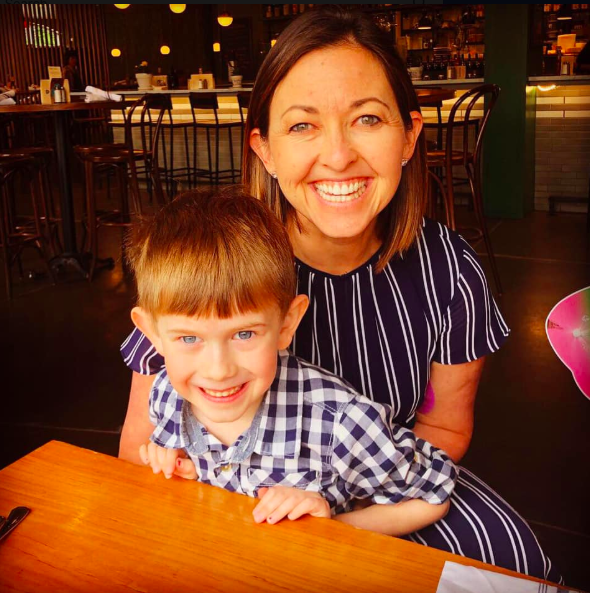BIG PICTURE
Does sugar and surplus carb-rich foods like rice, grains, fruit, etc matter in a family’s diet, specifically kids? Yes. Why? How, when and what we eat either supports or challenges blood sugar control, and the best ways to improve blood sugar control (which helps with learning, sleep, attention, muscle recovery and more) is to optimize what, when and how we eat.
- What: allow real whole food ingredients to dominate in the diet, minimizing processed grains, process bars, and other “healthy” foods. The term “whole foods” generally describes natural, unprocessed foods containing only one ingredient. Studies show that children need to be introduced to a food as many as 15 times before they will accept it. So don’t give up.
- What x2: at each meal strive to fuel w/ these 4: 1) protein (a palm-size portion unique to the individual eating), 2) fiber (fill half the plate, ideally with fruit and vegetables), 3) healthy fats, and 4) something green (greens, matcha, avocado, anything green to provide micronutrients to feed the body’s wellness needs). Snacks should not be a meal, but something to help bridge to the next meal and should not include a naked carb. A fat/protein and carb combo helps with blood sugar control and hunger.
- When: can snacks serve kids well? Yes. Do adults need snacks? No. It wasn’t until the 80s that consumers started to habitually snack, and bc of this, research shows, not only do we eat ~200 more calories at snacks, but we also increase the calories at meals. Have you ever noticed if you eat a bedtime snack that you are actually hungrier the next day? it’s not that your body needs more calories, or energy, the hunger is a response in the hormone shift that it causes. As for kids, it’s ideal to have well-rounded meals and one snack in the afternoon as a bridge to dinner. “The best ingredient in a meal is hunger.”
- How: this is the hard part of today’s world: eating together. Only half of the American families eat dinner together (according to Harvard research). When we create space and time to have a community around a meal, this is where health and wellness come to life. Note, this doesn’t always have to be dinner and note the average family dinner is only 22 minutes. Another opportunity to try to have a meal together is breakfast. A study of 8,000 children in Europe showed that kids who ate breakfast with parents five or more days a week were 40 percent less likely to be overweight than their peers.
- How x2: Three meals a week is the point where researchers begin to notice positive trends in a child’s nutritional and emotional health and when the number of meals reach closer to 5-7x a week, this is where researchers see the best impact for teenagers. Food for thought, researchers found that for young children, dinnertime conversation boosts vocabulary even more than being read aloud to.
Advice: Keep it simple. Have easy to assemble meals and take short-cuts, like buying the pre-cut vegetables, salad kits, use a slow-cooker, instant pot, and sheet-pan dinners as much as possible. Above all, cook double and utilize leftovers. Start small and stay flexible. Also, to decrease pressure on eating vegetables, try to avoid and limit bribing, and in regards to how much someone is or isn’t eating, just comment on how tasty the meal is.
More tips: family dinner should be fun. One strategy to keep it lively is to think of theme nights. Involve kids in choosing the theme. Breakfast for dinner, Taco Tuesday, Finger Foods and Picnic Night are fun ways to make cooking easy and to make dinnertime fun. During cleanup, crank up the music and let kids pick their favorite song.
KIDS & TREATS
Creating treats made up of natural sweeteners, like from fruit and pleasurable healthier things like cocoa, is a good first route. Examples:
- fat bombs made with a vanilla collagen powder. I’ll do 1 cup nut butter, 1/4 cup coconut oil, 3-4 scoops of collagen. I make these in a mini cupcake tray and leave them in the fridge. These come in handy for a fast fat at breakfast or at night when they want something small before bed. Fat before bed helps keep blood sugar levels steady.
- frozen bananas! And in a variety of ways. Peel and break up bananas and have them in the freezer, but before you freeze them, you can roll a banana in coconut flakes or chopped walnuts. If you freeze them plainly, you can top it with chocolate chips or nut butter.
- dressed up popcorn. Make some popcorn and put some shaved cheese on top, or spice it up with some cayenne.
- dates stuffed with nut butter or almond. You can also do this with figs.
- minimally processed whip cream and frozen berries.
KIDS & SUGAR
- Focusing on real food as key for most of the diet and not being overly restrictive with sugar. When talking about sugar, focus on the vocab being used, and when kids enjoy a treat, to about it being enjoyable and how it’s a balance of having them occasionally and to always pay attention to how any food makes them feel.
- There are foods that are better than others, verse focusing on good and bad things. Sometimes a treat lightens the spirit and that’s not a bad thing.
- More advice and education on sugar in the diet
EASIER DINNER/SHORT-CUTS
- Take all the short-cuts – this list is chock-full of ideas
- Be savvy with your time. I know grocery shopping takes enough time w/in itself but allows for some time to organize when you come home and put the groceries away.
- Freeze everything. If you make a large spaghetti bake (which I often do using spaghetti squash) or chili, freeze half. And you can freeze individual portions into wide neck mason jars.
- Use weekend time or free time to chop vegetables, prep a large salad (use a spinner to extend the life of the salad and freshness!), roast vegetables, root veggies and rice, grill some meats or make a casserole.
Above all, focus on fun and connection with your family!




Leave A Comment
You must be logged in to post a comment.